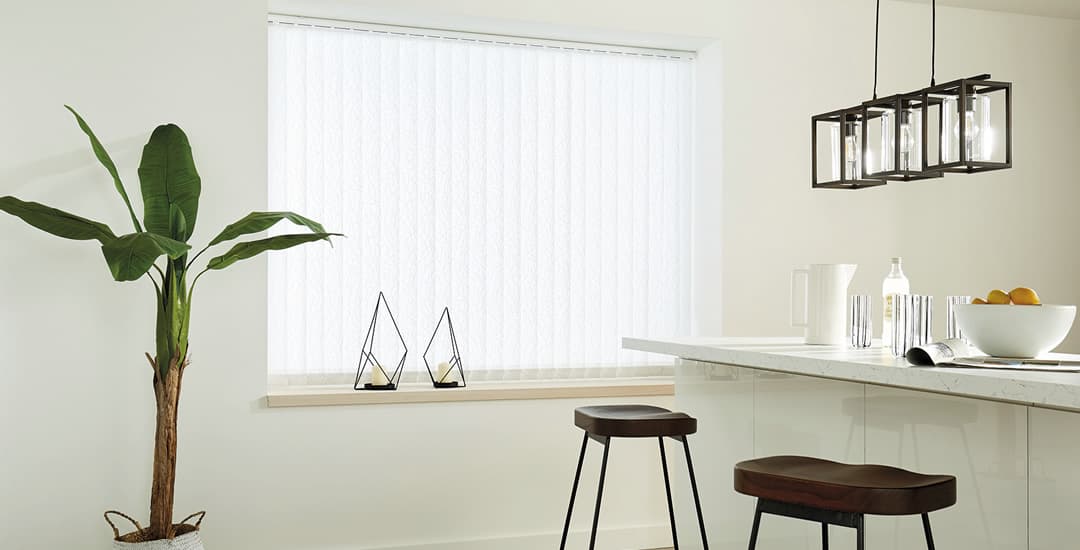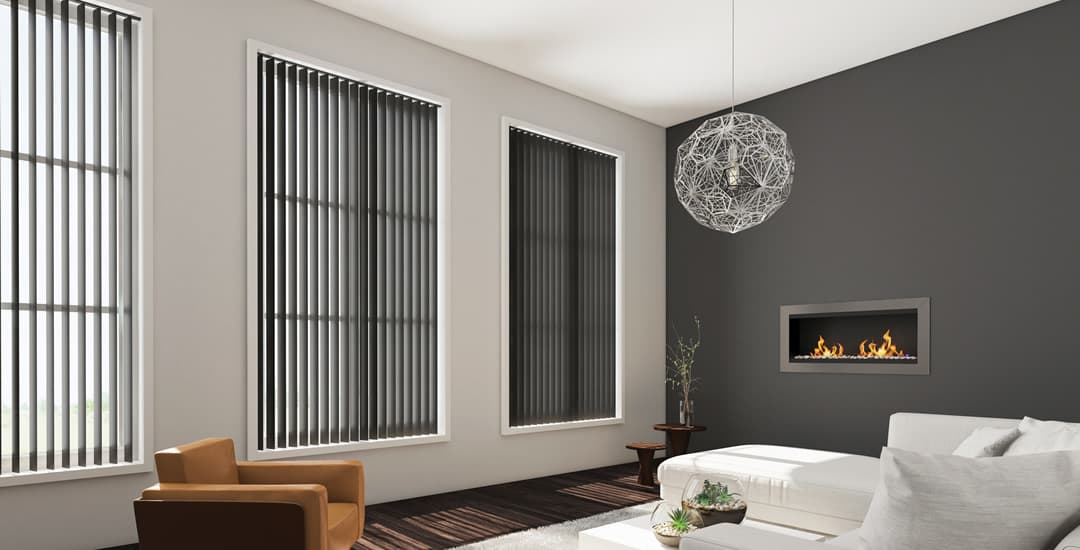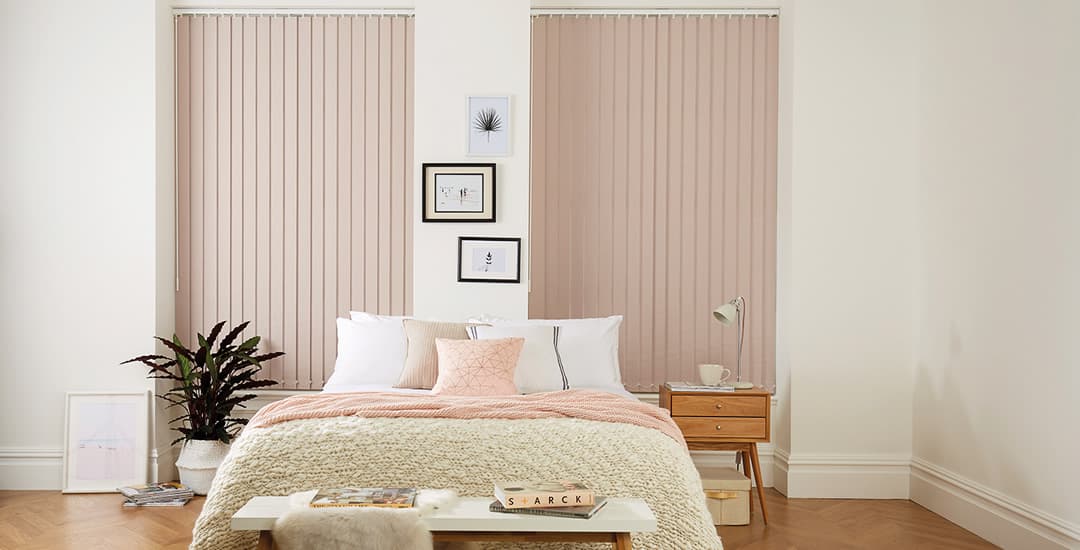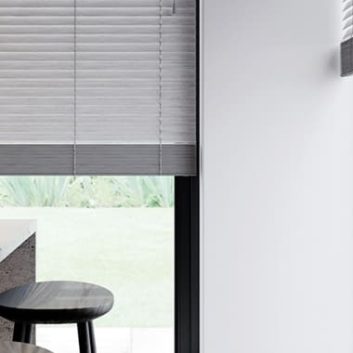
Are vertical blinds good? Yes, but they’re often unfairly maligned and ergo, overlooked, as for a long time they had something of an image problem, which they’ve only begun to shake off in a meaningful way relatively recently.
This being so, the reason I’ve brought you here today is to make a case for taking another look at vertical blinds, because as I just alluded to, they are indeed good blinds! Good in the sense that they tick a lot of functional boxes, are not (or at least, do not have to be) fugly, and tend to come with a low ratio of spend to a high ratio of self-congratulation on having made a sound aesthetic choice among those that pick them.
In this article I will explain why you should file everything you think you know about vertical blinds in the “outdated stereotypes” cabinet, and rethink them as a modern, on-trend, and very viable candidate to shortlist for your home (and home office for that matter too).
Are vertical blinds good, and if so, why the image problem?
Said image problem is almost exclusively due to the fact a lot of us historically associated vertical blinds with “ugly office blinds,” and think of as being a little light in terms of visual appeal.
That said, I’m not going to try to gloss over the fact that back in the day, vertical blinds were very much the “beige cardigan” of blinds world.
Part of this problem is ironically due to the sheer longevity and ability to continue to function long after everyone who remembered them being hung in their workplace has retired. This means that a set of verticals that have been around for longer than some adults of drinking age is apt to be looking both a little tired and weary by that stage, and also fairly outdated and not that cool.
Also, for the real granddaddies of the vertical blinds world that have lived among us since smoking indoors in workplaces was legal, they might be less the “beige cardigan” by now and more “nicotine yellow string vest.” If that’s what you bring to mind when you think of vertical blinds, well, I can see why you might be something of a reluctant adopter of a modern set.
It’s also worth bearing in mind that if you are indeed picturing an ancient set of verticals that it still in use today, the fact they’ve lived a long and full life is probably causing them to look less than pristine anyway, albeit you have to admit that it also speaks to their longevity and robustness.
When it comes to modern vertical blinds, they retain all of the benefits and versatility that saw them become so ubiquitous in the first place, only with better dress sense. In the following sections then I’ll cover their benefits, appearance, and other relevant points to help to hopefully sway you enough to give them another look.
What are the benefits of vertical blinds?

There’s quite a lot to unpack here, so bear with me. In a nutshell, the benefits of vertical blinds are:
- Vertical blinds offer a high level of light and privacy control. You can have them fully or partially open or closed, as well as tilting the louvres to the exact degree you want to filter light and enable you to look out without making it easy for others to see in.
- They offer great thermal efficiency, to help to regulate the temperature of the room by keeping too much sun (and heat) out in summer, or insulating against the cold in winter.
- They’re a great pick for wide, tall, or generally large windows as they’re very lightweight and easy to control.
- Vertical blinds are very low maintenance, don’t tend to collect dust in a meaningful way, and are very easy to clean.
- Vertical blinds are a good pick for kitchens or bathrooms, as their louvres can be made of either PVC or vinyl, both of which are waterproof and able to handle humidity and/or contact with water. They’re also fire retardant, which is another point in their favour for kitchens.
- Vertical blinds are also a good choice for conservatory windows, as they can be used to either filter or block sunlight as needed. They also lend themselves well to suiting many different styles and designs of conservatory windows, including long or tall ones, and those comprised of a number of smaller sections of windows, with a continuous row of vertical louvres used across the entire width.
Can vertical blinds look good though, or are they a bit “sensible shoes?”
Obviously everyone has a different idea of what looks good, but most people that think of vertical blinds as “blind most likely to achieve zero right swipes on a dating app” are thinking of very old fashioned and possibly, quite tatty-by-now ones.
Just about the only situation in which a vertical blind might not look great is if you pick one for a very small window (like a tiny bathroom window) where only three or four slats will be in play due to the window’s small size, which is apt to look rather disproportionate and odd.
That caveat aside, modern vertical blinds are available in a massive range of colours and fabric choices, including many different designs and textures; while we do sell more neutrals than anything else, this is the case for all of our blinds and does not reflect a lack of other options within the range!
The headrail of modern vertical blinds too looks slick, sleek, and streamlined, and is itself a clean, modern design element that works well in many different types of interiors.
Vertical blinds can create quite a strong visual impact if you wish, particularly in larger windows; and in bright or bold colours, can even take the place of a feature wall, and contrast with or complement your room’s wider design and colour scheme.
There’s plenty of room for personalisation and experimentation too, and you can switch things up somewhat by combining, say, vertical blinds hung within a window recess with curtains or voiles hung outside, to frame the window and potentially add additional insulation too.
Are vertical blinds good for privacy?

Are vertical blinds good for privacy? Yes, definitely. They provide about as much control as any blind can give you in this respect, as their louvres can be rotated all the way around, from fully open to fully closed and every point in between.
This allows you to angle or filter light, and retain a view without surrendering your privacy.
Vertical blinds can also be made so that they open all the way to either the left or the right, or alternatively, parting in the middle (like curtains) and so, opening in a pair to the sides.
Are vertical blinds good for insulation?
Yes, when fully closed, vertical blinds create an additional layer of insulation to reduce heat loss and save energy; or in summer, to deflect the sun and reduce the internal temperature in hotter rooms.
If you choose thermal blackout vertical blinds or those made from PVC rather than vinyl, these are made with fabric that is somewhat thicker than the norm too, contributing further to the insulating qualities of the blind.
Are vertical blinds better than horizontal blinds?
This isn’t really a question of better or worse, rather, they’re simply different, and which is better for you personally will come down to finding the blind that does what you want functionally, and your own personal taste.
One point in favour of vertical blinds is that they’re rather lighter than most types of horizontal blinds, which can be an advantage if you need a particularly large blind, as many alternatives will be quite heavy and unwieldy to operate once they get past a certain size.
When it comes to light filtering and managing privacy, both horizontal blinds that consist of slats (being aluminium Venetians, faux wood, and real wood blinds respectively) and vertical blinds offer the same high degree of control. the only difference is that a vertical blind has hanging vertical louvres, while the other three have suspended horizontal slats. The end result is the same, only the appearance differs.
Overall though, what makes a vertical blind better than a horizontal (or vice versa) ultimately just comes down to which you yourself like better!




